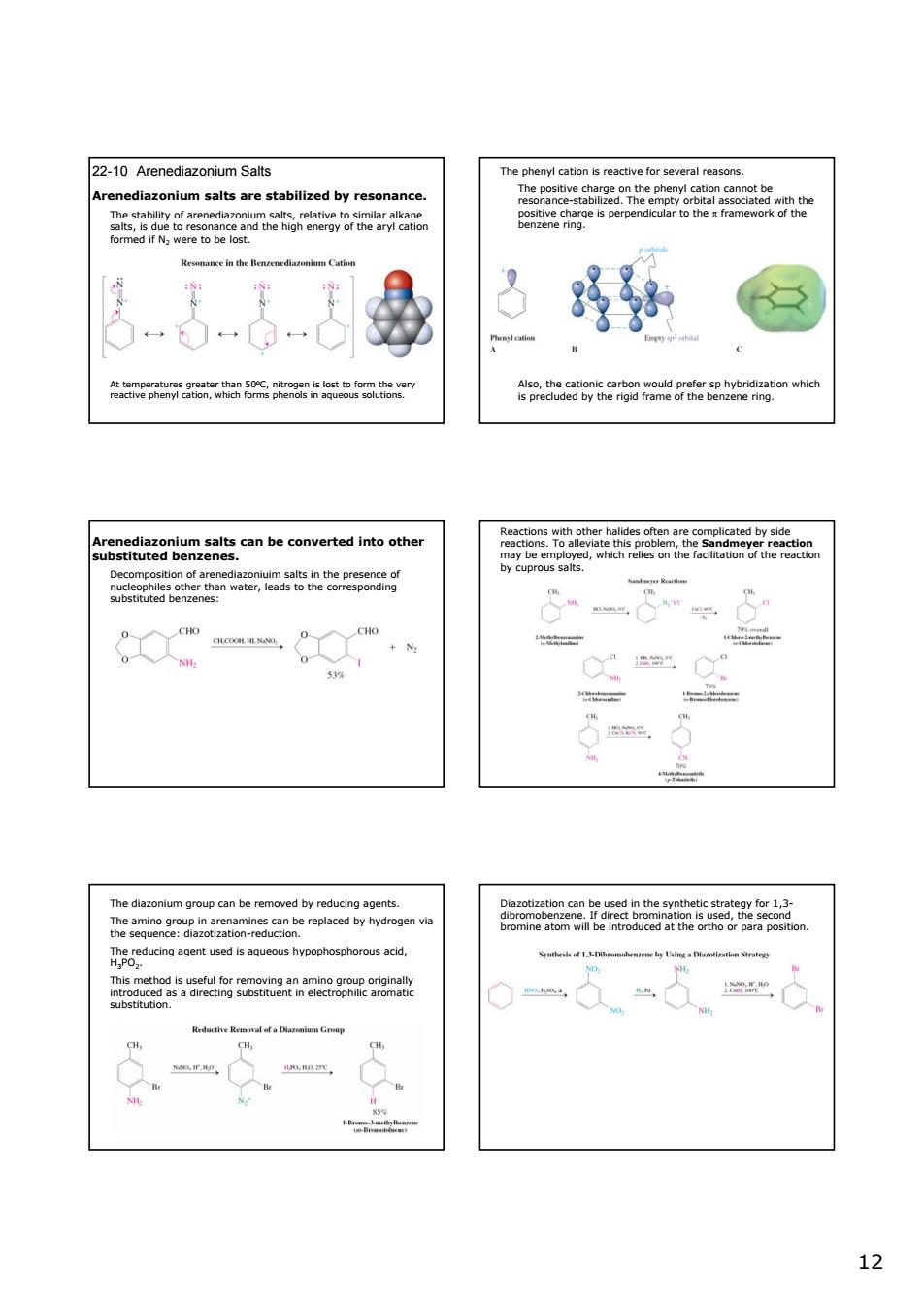正在加载图片...

22-10 Arenediazonium Salts The phenyl cation is reactive for several reasons. hilize d by re 食-- 3 amepmagrrhan0pe2rotatoaLeev acaagwSenenaeaaahc bgitteanemgales.anbeconvertodintothe +N 5% e g agent us CH 12 12 22-10 Arenediazonium Salts Arenediazonium salts are stabilized by resonance. The stability of arenediazonium salts, relative to similar alkane salts, is due to resonance and the high energy of the aryl cation formed if N2 were to be lost. At temperatures greater than 50oC, nitrogen is lost to form the very reactive phenyl cation, which forms phenols in aqueous solutions. The phenyl cation is reactive for several reasons. The positive charge on the phenyl cation cannot be resonance-stabilized. The empty orbital associated with the positive charge is perpendicular to the π framework of the benzene ring. Also, the cationic carbon would prefer sp hybridization which is precluded by the rigid frame of the benzene ring. Arenediazonium salts can be converted into other substituted benzenes. Decomposition of arenediazoniuim salts in the presence of nucleophiles other than water, leads to the corresponding substituted benzenes: Reactions with other halides often are complicated by side reactions. To alleviate this problem, the Sandmeyer reaction may be employed, which relies on the facilitation of the reaction by cuprous salts. The diazonium group can be removed by reducing agents. The amino group in arenamines can be replaced by hydrogen via the sequence: diazotization-reduction. The reducing agent used is aqueous hypophosphorous acid, H3PO2. This method is useful for removing an amino group originally introduced as a directing substituent in electrophilic aromatic substitution. Diazotization can be used in the synthetic strategy for 1,3- dibromobenzene. If direct bromination is used, the second bromine atom will be introduced at the ortho or para position